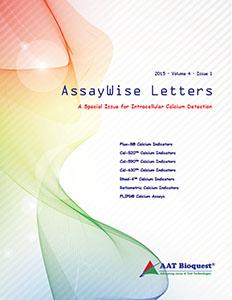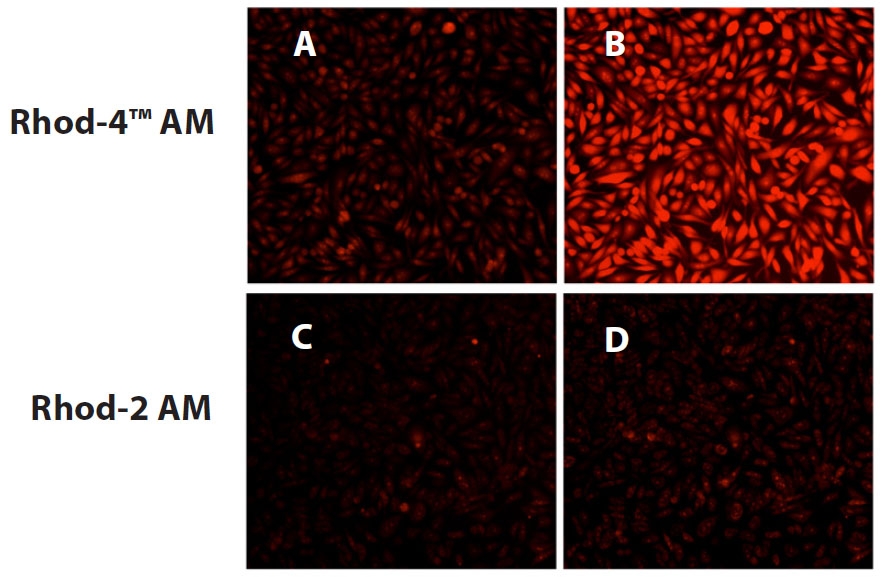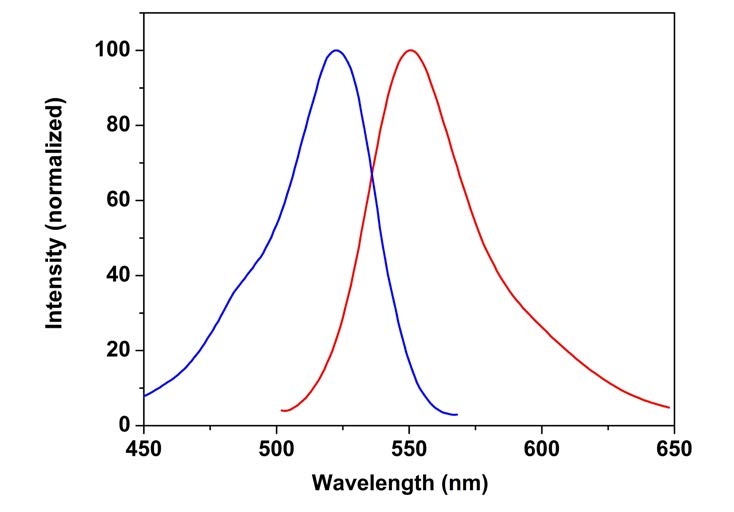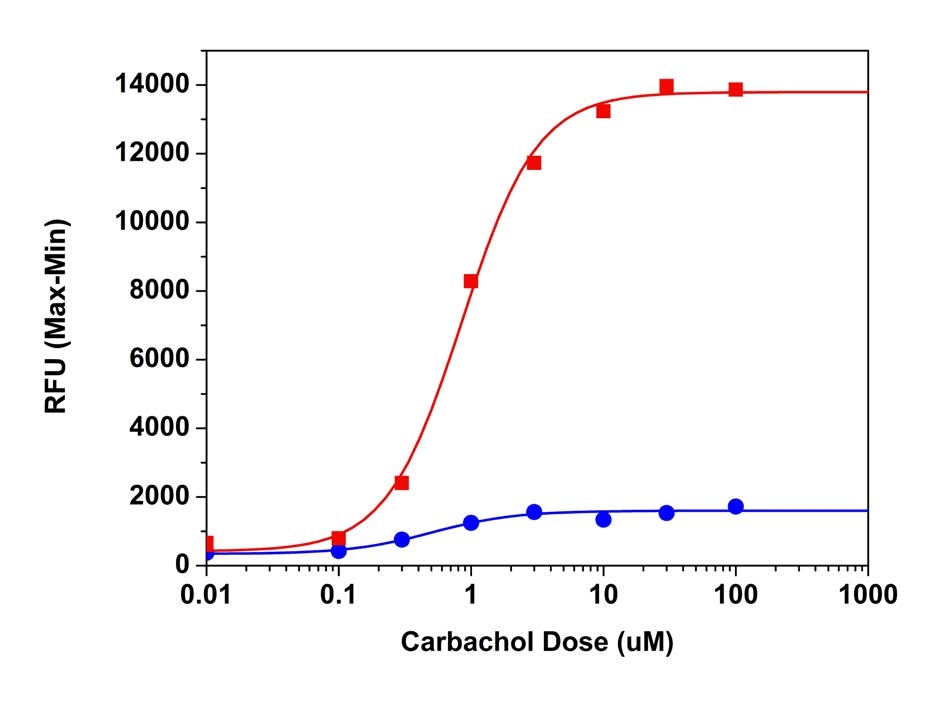Rhod-4™ Calcium Indicators
Rhod-2 is the most commonly used red fluorescent calcium indicators. However, Rhod-2 AM is only moderately fluorescent in live cells upon esterase hydrolysis, and has very small cellular calcium responses. Rhod-4™ has been developed to improve the cell loading and calcium response while maintaining the spectral wavelength of Rhod-2. In CHO and HEK cells, the cellular calcium response of Rhod-4™ AM is 10 times more sensitive than that of Rhod-2 AM. Our in-house research indicated that Rhod-4™ AM can detect calcium transients in stem cell cardiomyocytes that was not detected with Rhod-2 AM under the same conditions. The higher sensitivity of Rhod-4™ AM might be due to its higher cell loading efficiency than that of Rhod-2 AM.
ATP-stimulated calcium responses of endogenous P2Y receptors were measured in CHO-K1 cells with Rhod-4™ AM (Cat# 21120) and Rhod-2 AM (Cat# 21062). CHO-K1 cells were seeded overnight at 50,000 cells/100 µL/well in a Costar 96-well black wall/clear bottom plate. The growth medium was removed, and the cells were incubated with 100 µL of dye loading solution using Rhod-4™ AM (4 µM, A and B) or Rhod-2 AM (4 µM, C and D) for 1 hour in a 37 °C, 5% CO2 incubator. The cells were washed twice with 200 µL HHBS, then imaged before (A and C) and after (B and D) ATP treatment were taken with a fluorescence microscope (Olympus IX71) using TRITC channel.
Left: The excitation and emission spectra of Rhod-4™ in PBS buffer (pH 7.2) in the presence of 5 mM calcium chloride. Right: Carbachol dose responses were measured in HEK-293 cells with Rhod-4™ AM (red curve, Cat# 21120) and Rhod-2 AM (blue curve, Cat# 21064). HEK-293 cells were seeded overnight at 40,000 cells/100 µL/well in a Costar 96-well black wall/clear bottom 96-well plate. The growth medium was removed, and the cells were incubated with 100 µL Rhod-4™ AM dye loading solution, or 100 µL Rhod-2 AM dye loading solution (5 µM) for 1 hour at room temperature. Carbachol (25 µL/well) was added by NOVOstar (BMG Labtech) to achieve the final indicated concentrations. The EC50 of carbachol with Rhod-4™ AM was about 0.8 µM.
Table 1. Visible Light-Excitable Orange Fluorescent Calcium Indicators
| Cat No. ▲ ▼ | Product Name ▲ ▼ | Ex (nm) ▲ ▼ | Em (nm) ▲ ▼ | Kd ▲ ▼ | Unit Size ▲ ▼ |
| 21064 | Rhod-2, AM *UltraPure Grade* *CAS#: 145037-81-6* | 549 | 578 | 570 nM | 20x50 ug |
| 21067 | Rhod-2, tripotassium salt | 549 | 578 | 570 nM | 1 mg |
| 21068 | Rhod-2, trisodium salt | 549 | 578 | 570 nM | 1 mg |
| 21120 | Rhod-4™, AM | 524 | 551 | 451 nM | 1 mg |
| 21128 | Rhod-4™, sodium salt | 524 | 551 | 451 | 5x50 ug |
| 21070 | Rhod-5N, AM | 551 | 577 | 0.3 mM | 1 mg |
| 21072 | Rhod-5N, tripotassium salt | 551 | 577 | 0.3 mM | 1 mg |
Recent Citations of Rhod-4™ Calcium Indicators
- Caroline Arnold, Anja Feldner, Larissa Pfisterer, Maren Hödebeck, Kerstin Troidl, Guillem Genové, Thomas Wieland, Markus Hecker & Thomas Korff. RGS5 promotes arterial growth during arteriogenesis. EMBO Molecular Medicine (2014) 6,1075-1089. DOI:10.15252/emmm
- Erwann Rousseau, Patrick P. Michel, and Etienne C. Hirsch. The Iron-Binding Protein Lactoferrin Protects Vulnerable Dopamine Neurons from Degeneration by Preserving Mitochondrial Calcium Homeostasis. Mol. Pharmacol., Dec 2013; 84: 888 - 898.



